This is a bizarre reflection, but the first week at COP24 underpins such contemplations- four countries did not want to state that they welcome the IPCCS special report on 1.5 degrees global warming. These are USA, Kuwait, Russia and Saudi Arabia. They did not raise their voice in the ensuing debate. So if we don’t welcome facts and evidence, what should then be the basis for policy: gut feelings and near term profits?
Read my reflections on the IPCC report in this blog
These are disturbing thoughts as I enter the COP24 in Poland, a country which is largely powered by coal. Being used to the smell of coke and coal burning from my student time doing experiments in the anode baking furnace in Årdal and Sunndalsøra 30 years ago, it is recognizable here too.
Learn more about CCS
Join our newsletter to stay updated with all the latest research results and news from NCCS: The Norwegian CCS Research Centre.
Discussing zero emission agriculture and the energy field with Yara
My first day at COP24 starts with discussing zero emission agriculture with Yaras VP sustainability Bernhard Stormyr. In a net zero emission world, agriculture has a long way to go to become really low carbon. There are bound to be emissions from the soil and from livestock- methane, nitrous oxide and CO2. But much can be done with precision farming, biomass production etc. And how about the carbon negative-climate positive solutions?
We also move our discussion into the energy field: ammonia as a carbon free energy carrier- splitting it to hydrogen and using it widespread. We conclude that these are exiting prospects where we can work closer together.
Hurrying along to the next meeting, I spend a couple of minutes in the India Pavillion. Why? Because India now has the worst air quality in the world. A lot of people congregate in the lecture hall where photovoltaic/PV is to be discussed. It is good to see that the market responds to the challenges of a just transition and for providing electricity to lower income countries.
PV has gone mainstream, there is not much PV or wind displays around, these are good news in my view.
“A clean planet for all” must embrace the hydrogen society at scale
Next meeting is with EU DG Climate. My message is that the report launched by the Commission as the position in front of the COP24 “A clean planet for all” is good but does not embrace the hydrogen society at scale, which relies on CCS and large surplus of renewable low cost electricity.
And how about the carbon negative/climate positive solutions? There is so much needed of these technologies in the future, but there is hardly any activities in this space.
The report on 1,5 degrees shows that we need a disturbing amount of net CO2 removal by mid century. I was “wearing three hats” in this Meeting: SINTEF, EERA and ZEP. The discussion is dynamic and suddenly time is up, their next meeting is with “your minister Elvestuen”. Responding to that with “Oh-good – I am meeting him at 13:00” gave me a certain satisfaction. I love the flat hierarchy of the Nordic countries.
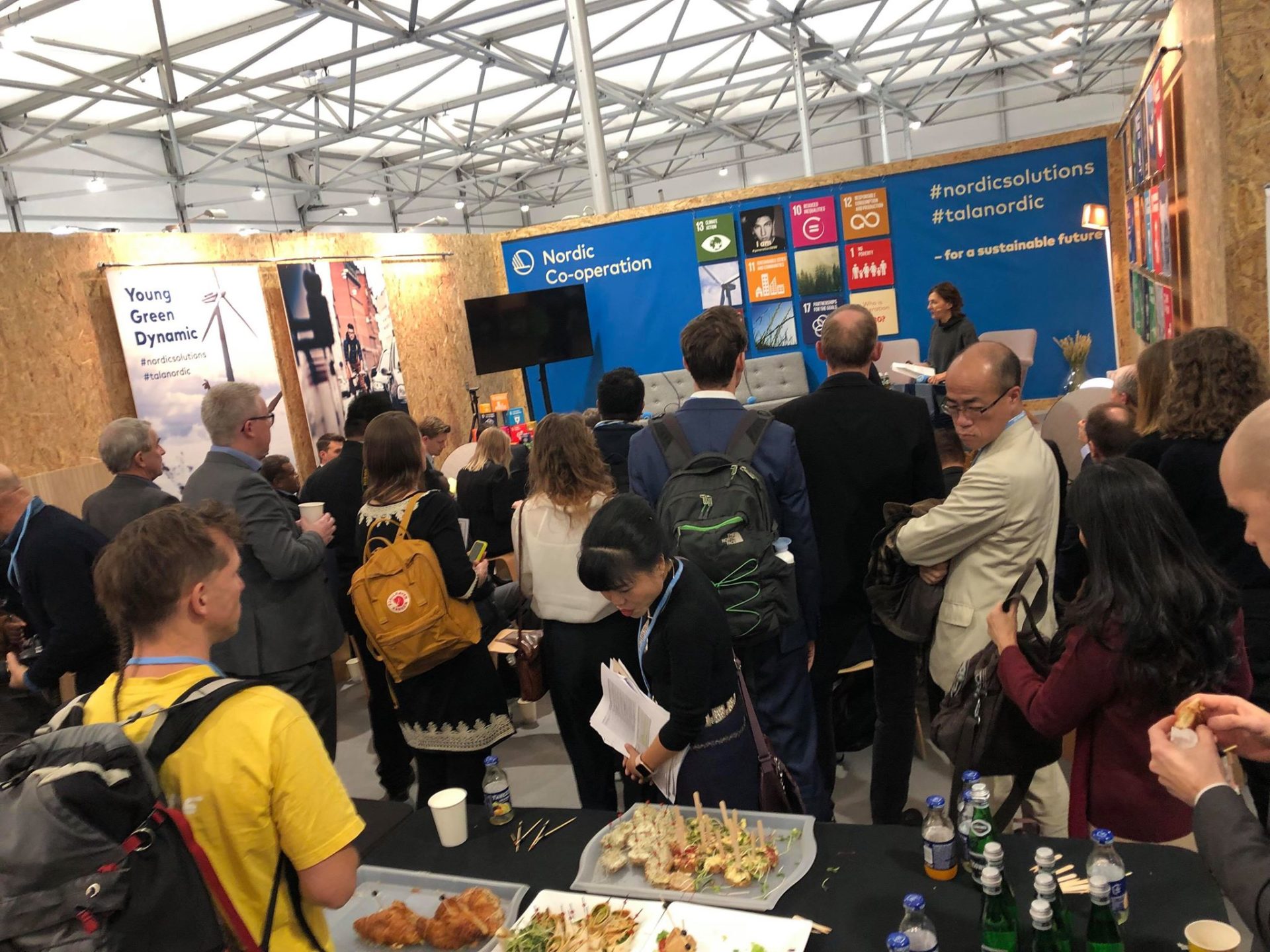
Electrofuels vs biofuels for zero emission aviation
Next meeting was cancelled which, gave me a little time to walk around in the vast area for this event. The EU pavillion had many interesting slots, also on zero emission aviation. Curves were presented showing potential zero emission within Europe using electofuels. Evidently this was much more efficient than using biofuels from various sources.
What is electrofuels? It’s recombining hydrogen from electrolysis (power from renewables) and CO2 to make new fuels. But it only makes sense climatewise if the CO2 origins from air capture or from biogenic sources. The speaker could not say where the CO2 should originate from – so time to move on.
Again the issue about climate positive solutions emerges
Outside the EU pavilion I stumble upon Espen Barth Eide, former director of World Economic forum, minister of defence and foreign minister of Norway; and now in the Norwegian Parliament Energy and climate committee for the Labour party. Again the issue about climate positive solutions emerges, and the lack of action. What can Norway do as an Ocean-nation? I pointed out the recent findings of macroalgae by SINTEF, that this can capture large amounts of CO2 in the ocean and have diverse uses in the society.
We also discuss the initiative for the global energy alliance, which puts the Norwegian ACER-discussion in a small corner of the global picture. China seems to be pushing the issue. We agree to meet in February to discuss climate strategies.
Total decoupling between technology and politics
Time is running fast and next meeting is with the negotiation delegation. The Norwegian Minister of Climate and Environment, Ola Elvestuen, has taken a lead position in the negotiations here in Katowice and he is of course late, but can’t blame him and his team for that. Listening to the progress and lack of progress it strikes me that there is a total decoupling between technology and politics.
The fight is about words and meanings, there is even some doubt that the principles of the Paris Agreement will be fully accepted. Luckily we have the high ambition group of countries that is pushing the bar upwards on ambitions.
I suggest that maybe it would be wise to suggest a common initiative to develop carbon negative solutions.
This could give some leeway and momentum to avoid the seemingly unavoidable overshoot on the Paris Agreement targets. Elvestuen agrees that this would make a lot of sense but at this time of the negotiations, technologies are not on the table.
Should we have a task force on technology and implementation?
As a technologist this is disturbing, maybe we should have had a task force on technology and implementation to see what we can actually do, not only the model tools which can give you scenarios? The “Magic” BIOCCS aka BECCS for instance – a magic wand to make emissions disappear in models. But what does it really take? What are the implications on sustainability in the larger picture? I wish the team all the best in the negotiations, we need a good outcome from COP24!
The role of H2 in decarbonising the economy
Next is an intervention about the role of H2 in decarbonising the economy. I have blogged about this opportunity earlier but the message has to be repeated and repeated again. I represent the R&D sector in a panel of 7 speakers representing gas producers, the European Investment bank, former advisor to the Energy secretary of the US and the GCCSI. I present how we can provide clean energy from fossil fuels- this presumes the use of CCS and Hydrogen as a carbon free carrier.
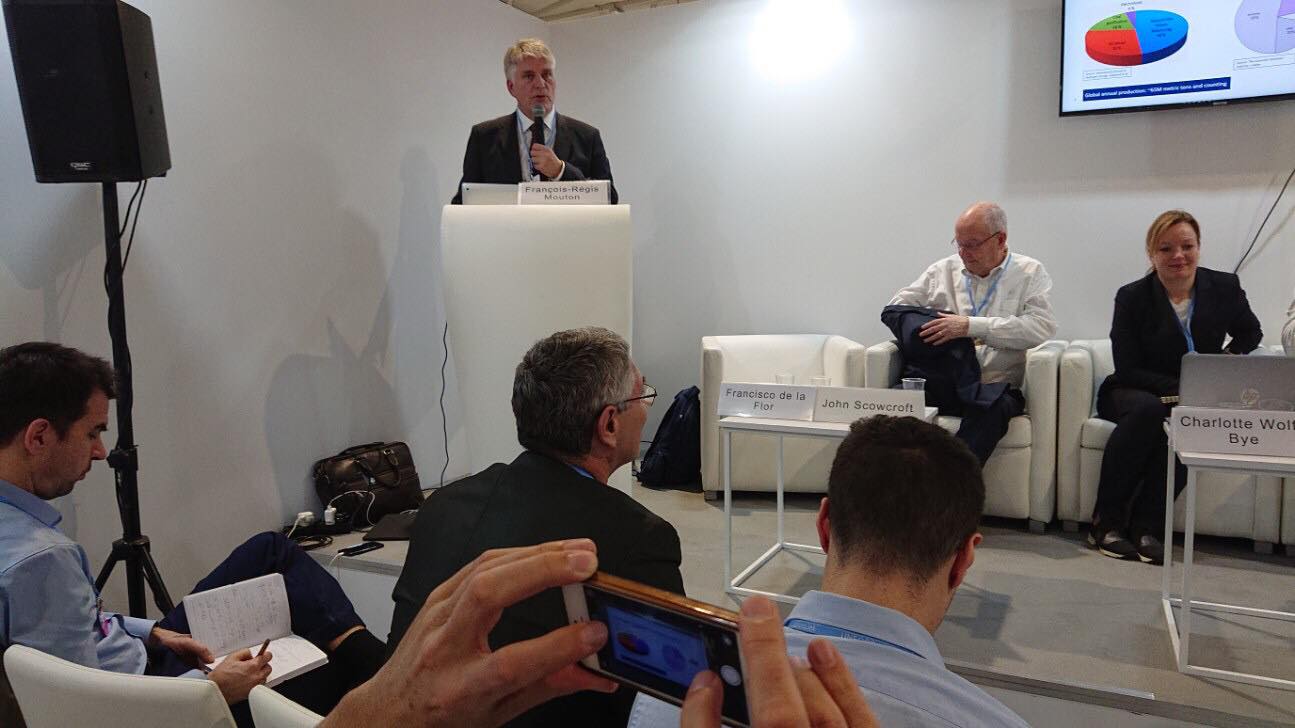
Today I see no protesters in the room. An event on Wednesday hosted by the EU saw protesters leaving the room when gas was mentioned as a route towards Paris Agreement. This tells something about how fossil fuels are perceived- also natural gas.
Maybe the prospects of removing 800 million tons of CO2 from the carbon budget in Europe by replacing natural gas with hydrogen has something to do with the lack of protesters?
Qatar will make the football World Cup zero emission by using hydrogen.
The post-presentation mingling took some time, and I was approached by Qatar who will make the football World Cup zero emission by using hydrogen. This is popular it seems, as the Tokyo Olympics will become a showroom for hydrogen technology and uses. This could be seen a tthe Japan Pavillion, bringing hydrogen from Australia and from electrolysis to Japan and operating a fleet of transport and services based on hydrogen. Let’s see how the patented membrane technology from SINTEF can play a role here: innovation in practice.
Late again, I catch the editor of the PV magazine while he is texting me with “where are you?”. We sit down in the Austrian Pavillion, where we hear in the background about biogas power and the like. Max wants to get my impression so far from COP. We share the view of PV becoming mainstream, and that India and China is pushing these issues, contemplate a bit on storage needs and systems costs whilst being puzzled that the industry is not so visible at COP.
The industry used to be more plentiful during these meetings, and again I am concerned that technology and policy seems to be detached. I arrange for him to meet with EERA Joint Programme for PV to follow up on the technological prospects of further breakthrough in PV and also to come to SINTEF to see what we are doing in this space.
Do widzenia from Katowice!
Now it is time to socialise – and to discuss the trends in Europe and the US on climate and energy policies. Some nice pictures are taken in front of the #COP24 installation and we are going out into the cold and dark evening in Katowice. A great day at the COP; many impressions to digest.
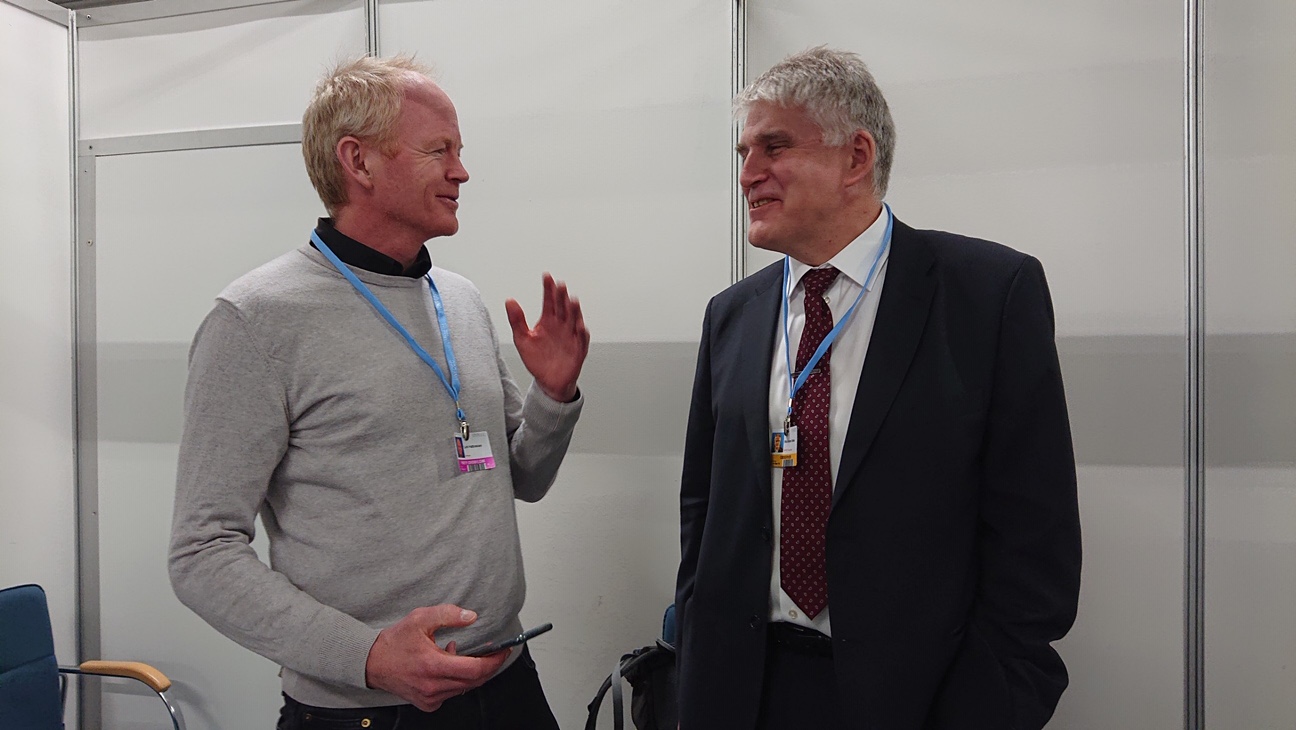
I think the implications of net zero is not well understood and that we are unfortunately trying to push the goal further and further away from us. As Lars Haltbrekken (MP) said in a discussion with him earlier in the day: We need to have rules and a clear framework for reductions.
Indeed, I read when coming back to the hotel that Norway has agreed a roadmap with the EU for adhering to the EU rules for 40% reduction by 2040. Good! Although this is not going to produce the Paris Agreement goals, it means real implementation and hopefully ratcheting up real activities. This is where the R&D community can deliver – deliver solutions.
And – have no doubt- I expressed many times today that investing less than 2% of public R&D in clean energy will not deliver the wanted outcome- we need double digits.
Do widzenia from Katowice!
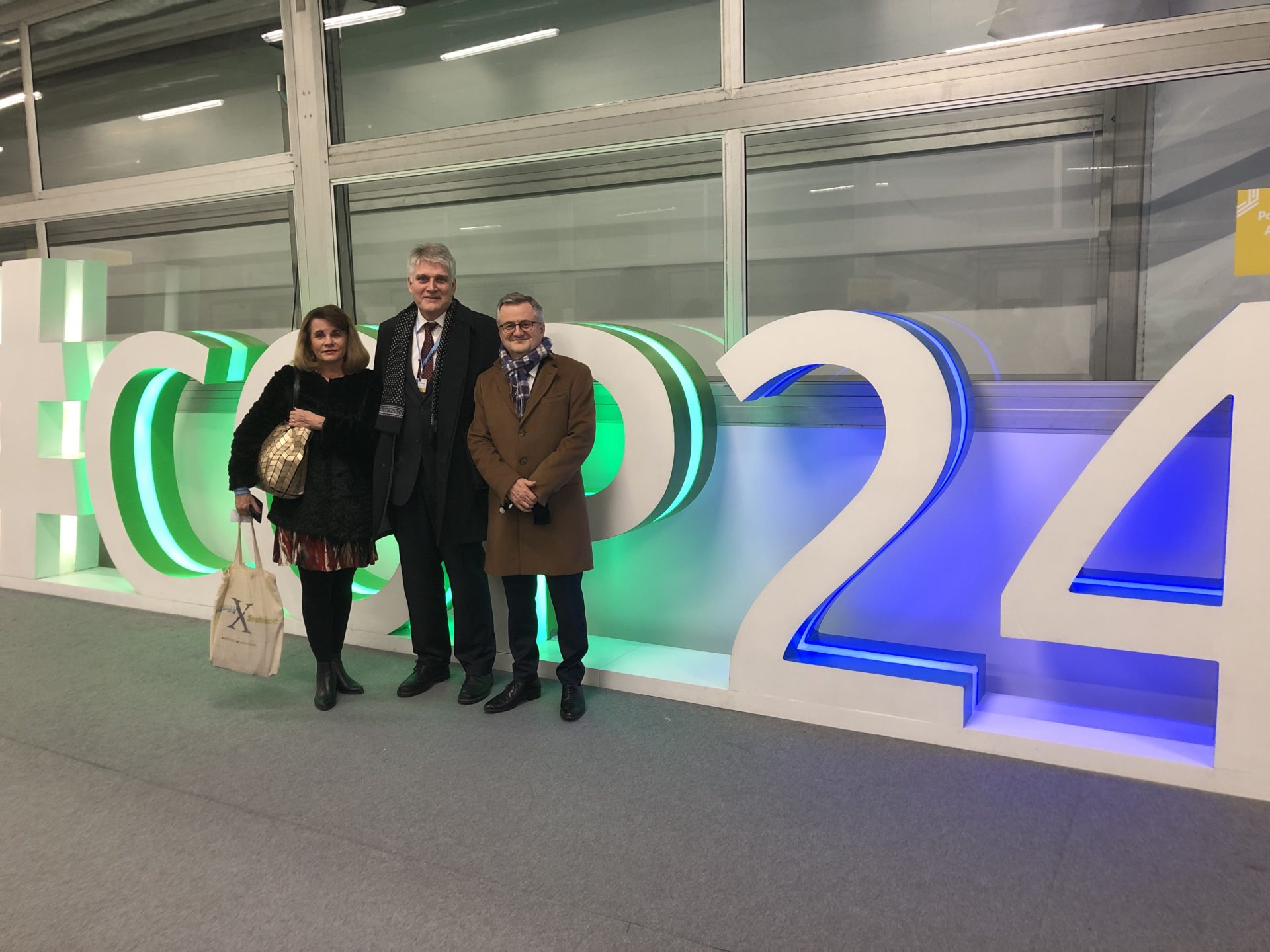
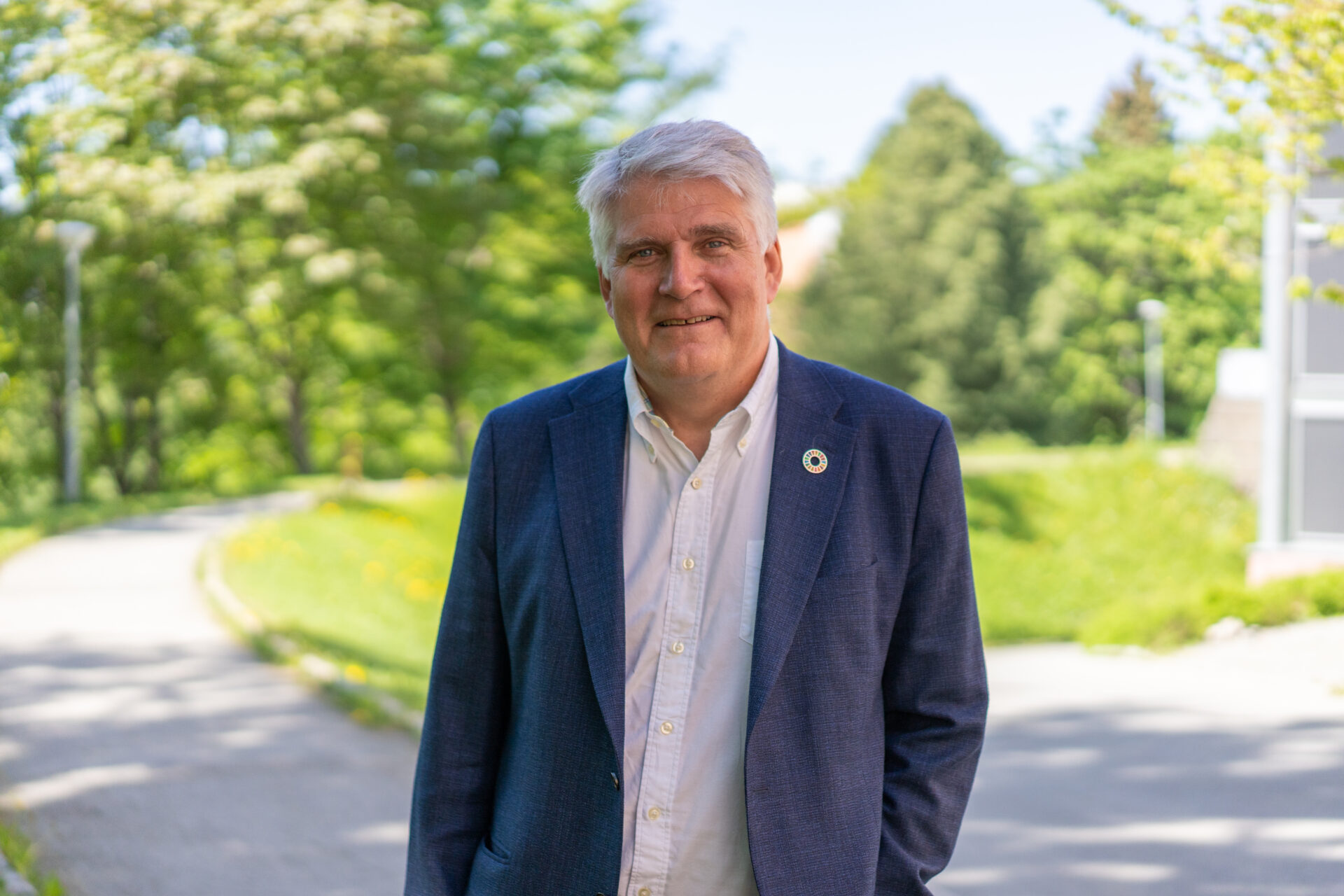







Comments
No comments yet. Be the first to comment!